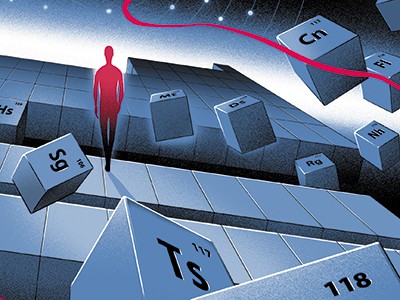
A global group spearheaded by scientists in Germany has identified a new isotope of seaborgium. The study, carried out at the GSI/FAIR accelerator in Darmstadt, Germany, observed 22 nuclei of seaborgium-257. This increases the total number of recognized isotopes of the synthetic superheavy element seaborgium, which has an atomic number of 106, to 22.
Seaborgium-257 was created by merging a chromium-52 beam with a thin layer of lead-206. The researchers recorded 21 spontaneous fission decays from a seaborgium-257 nucleus, along with one alpha decay, totaling 22 nuclei. The half-life of this new isotope, located just adjacent to the enhanced neutron shell gap at 152, is measured at 12.6 milliseconds.
Seaborgium was initially discovered in 1974 when both a Russian team and a US team claimed to have synthesized the superheavy element utilizing two distinct sets of elements. Although the Russian group, led by Yuri Oganessian, was the first to assert the element’s synthesis, the experimental proof from the US team was considered more compelling. Consequently, the US group ultimately decided on the name for the new element, naming it seaborgium in honor of their leader, Glenn Seaborg, who at the time was the only living individual to have an element named after him. However, Oganessian received recognition as element 118 was named oganessian in his tribute in 2016.
‘Our research on seaborgium-257 offers thrilling insights into the effects of shell phenomena on the fission characteristics of superheavy nuclei,’ remarked Pavol Mosat from GSI/FAIR, the lead author of the study. ‘As a potential outcome, it is conceivable that the next lighter, yet unidentified isotope – seaborgium-256 – might experience fission in an extremely brief timeframe of one nanosecond to six microseconds.’